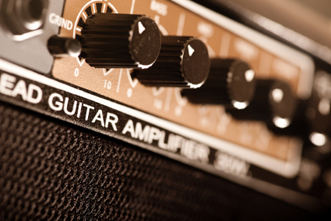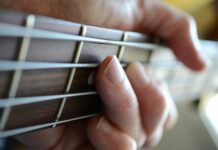It was nearly time to begin the service. The congregation was gathering in the building, some clustering in the aisles and halls, others dutifully making their way to the space inside the large auditorium. At five minutes ’til, the musicians took their places, running through an instrumental version of one of the tunes we’d all be singing later in the meeting, and I winced in pain. A sinking feeling ran from head to toe: this was going to be a LOUD service.
As a musician who spends a lot of time recording, I’m nervous around loud sounds. I cover my ears when sirens pass. I rarely sit in the front rows of concerts. I don’t like playing with loud drummers. So as the volume swelled, I reached for my trusty iPhone, opening up the Sound-Pressure-Level meter app. The peaks were around 110 or 112 decibels, which is loud—near the damage threshold, in fact. I put the phone away, determined to do my best in participating without wincing, praying that they would turn it down.
The irony of this story is that the music was as traditional as it gets. The only instrument playing as I took SPL readings was a pipe organ.
Volume is a source of regular frustration and conflict around worship services. I was only about 10 years old when I witnessed one of my first church wars. Our music minister had just resigned, and a church musician was asked to coordinate the worship services until a new minister was hired. On about his third Sunday, he rolled out “The Great Adventure” by Steven Curtis Chapman, a move that thrilled half the audience and offended the rest. While portions of the room clapped along, others literally stood covering their ears. (As I recall, electronic drums were purchased days later.)
I’ve been playing electric guitar in worship bands since I was 15, and the battle over volume has been part of that journey since day one. By no stretch of the imagination do I claim to have perfected this, nor do I claim innocence in all the volume wars I’ve been a part of. But over the years, I have learned some valuable lessons, and I offer a few of them here.
All Music Is (at Times) Loud . . . and Should Be
Many assume only contemporary music is loud. This is simply untrue. While a rock ensemble is capable of painfully loud volumes (and it’s often easy to get to these levels), so is traditional or classical instrumentation. Symphonic music and pipe organs can peak at the same decibel levels as rock music with the same potential for lasting damage. You encounter similar risks to your hearing at a performance of Handel’s Messiah as you do at a Matt Redman concert.
Most hearing damage happens when someone has sustained exposure to loud volumes. Every church should buy a decent, inexpensive SPL meter and check levels periodically from different places in the room. You’ll be surprised to see how much variation there is from spot to spot.
There should be no doubt that, in the gathering of God’s people, there’s an appropriate time for loud volume. Gather 500 souls in a room, get them all singing in harmony, and you’ll see that they can get incredibly loud—and they should. The psalmist says, “Shout to God with loud songs of joy!” (Psalm 47:1) Worship should invoke the kind of celebratory volume that flows naturally from a crowd. We cheer on athleticism at sporting events, we cheer on skill in the performing arts, we cheer on political speeches when they ring true to us. Likewise, we should respond to God’s revelation of himself with culturally appropriate, loud celebrations. In North America, the language of celebration in music is often led by some sort of rock ensemble. You can even see it in national politics, when Bill Clinton pulls out his saxophone and Mike Huckabee pulls out his electric bass. It’s not surprising, then, that this arrangement has become the standard for how many celebrate in our worship gatherings.












